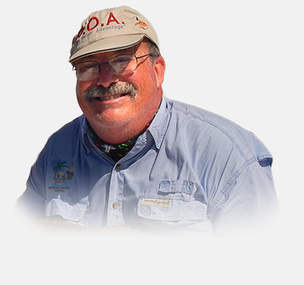February Orlando Area Fishing Forecast
POSTED ON JANUARY 30, 2020 IN FISHING REPORTS

Mosquito Coast Fishing Charters
Nothing has been routine about the weather so far this winter. Warmer and breezier conditions have only provided us with a few decent weather days in January, and the long-range forecast for the beginning of February is not looking too favorable. Also, there is still the chance of freezing conditions returning this year, but your guess is as good as mine. I’m not complaining, just stating the facts, because even with the worst weather we are still blessed to be fishing and catching here in Central Florida.
Normally, once the cold front pushes off the coast into the Atlantic and high pressure settles in, and fishing conditions can shift from miserable to magnificent overnight. One sign I watch for is the development of fog in the early morning hours. As high-pressure systems move off to the northeast, southeasterly wind shifts carry humid air off the Atlantic. Rising humidly levels are an indication of warming temperatures, and a falling barometer. These factors provide ideal weather for fishing the flats and running offshore once the fog burns off. When the next approaching front moves closer the winds will begin to back down from the south and eventually shift from the west just before the front hits. As a rule, the stronger the cold front, the more intense the wind speed and shifts will be. All of this information falls in the nice to know category if you are one of the lucky people who can pick their days on the water, but for most of us the best day to fish is whenever you have a chance.
Another important point to remember when fishing inshore is falling water temperatures force most fish, bait included, to seek deeper locations in search the warmest water they can find, and they become very sluggish (cold blooded). As the sun warms the water, all it takes is a degree or two change and the fish will begin to move into the shallow flats to feed. On the sunny mornings, it is not uncommon to find redfish and trout holding in the deeper sand pockets within the shallow flats where water temperatures raise quickly. Additionally, warming water temperatures combined with sunny spring days and clear water, make February one of the best months to site fish for redfish, large sea trout, and black drum on the lagoon flats. For larger sea trout, fish at first light, sunset, or at night with natural baits and target areas where mangrove edges, docks, and other structures adjacent to deep water dredge holes, sloughs, or canals with mucky bottoms. These same areas will also hold concentrations of small trout which can be caught throughout the day on small jigs and shrimp imitation baits like DOA Shrimp fished very slowly along the bottom.
Offshore, kingfish can still be found along the inshore reefs and wrecks, and they will remain there if the water temperature stays above 68 degrees. When targeting kings, focus on the areas of 8A reef, Pelican Flats, and Bethel Shoals to the south. Look for cobia and amberjack to be holding on the inshore wrecks out of Port Canaveral and Ponce Inlet . Most importantly , live bait is tough to find this time of year, so always carry a box of frozen Spanish sardines with you as backup.
Near-shore look for tripletail concentrations to improve greatly along the Port Canaveral buoy line and under floating weeds and structures, and for cobia to move in shadowing manta rays if the surface water temperatures reach the upper sixties. Now is also the time for shore fisherman to target pompano, bluefish, weakfish, small black drum, sheepshead, Spanish mackerel and whiting in the surf and larger redfish and flounder around the inlet jetties and.
Finally, windy days in February are a great time to check out those freshwater fishing holes on the St Johns River. Currently anglers have been catching American shad, speckled perch, warmouth perch, and largemouth bass. Like everything else this year, the shad run is behind schedule. This past week I heard one good report of shad coming from the Marina Isles to Mullet Lake section of the St. Johns River, with only a few shad being taken south of Lake Harney. As the run progresses the shad should be moving into the shallows south of Hwy 46 and beyond HWY 50, so fly anglers get ready.
Currently water levels are dropping on both the Lagoons and on the St Johns River, so please operate your vessels with caution when fishing in theses area.
Remember when planning a fishing trip in February, keep a close eye on the weather, and fish whenever you have a chance.
Seminar Schedule in February:
Central Florida Offshore Anglers Association (CFOA) Annual Bait Rigging Seminar Monday, February 10th – 6:30pm
Winter Park Community Center 721 W New England Ave Winter Park, FL 32789
This event is open to the public, and I will be covering Shad and Crappie as well as a Katmai Lodge Alaska Show and Tell. For more details visit https://mycfoa.com/.
As always, if you have questions on need information, please contact me.
Good luck and good fishing,
Captain Tom Van Horn
www.irl-fishing.com
mosquitocoast@cfl.rr.com
407-416-1187 on the water
- January 2021:Tom Van Horn - December 31, 2020
- December, Tom Van Horn - December 1, 2020
- Tom Van Horn:November - October 30, 2020











